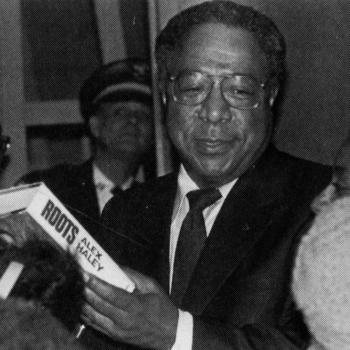Alex Haley, author of Roots, was born in 1921.

Event Description
Alex Haley's first notable work was as editor of The Autobiography of Malcolm X. He is most remembered for Roots: The Saga of an American Family, which earned a Pulitzer prize in 1976, and then became a very successful television mini-series in 1977. The story, about African slaves brought to America, was based on Haley's search into his own ancestry. Queen, a sequel to Roots, followed in 1993.
Classroom Activity
Have students explore their own roots by interviewing family members. Students then use their family history as a basis for their writing.
- First, ask students to identify family members who could share a detailed and interesting family story. Then, have the class brainstorm a list of appropriate questions to "jumpstart" the interview. (Help students think about using both open-ended questions such as "What do you remember about...?" or more specific questions, such as "Where were your parents born?")
- Have students select and interview (by e-mail, regular mail, telephone, or in person) one or two people.
- Ask students to use their interviews as a basis for writing a fictional account of their roots, in the way Haley's Roots was based on his own family history.
Websites
The foundation provides a variety of community and educator resources. Teachers can find information on genealogy, biographies of Haley and Kunta Kinte, timelines of African-American history, and more.
This teacher's guide is provided by Random House publishers. The page includes discussion questions, as well as a variety of activity suggestions for the classroom.
This website offers tips to get you started researching your own family history. Included is information about organizing the information you already have, using military records, census data, libraries, and other resources in your research, and sharing your family history.
The Genographic Project traces human ancestry through DNA. Individuals can learn about their own history by buying and using a kit prepared for the project.